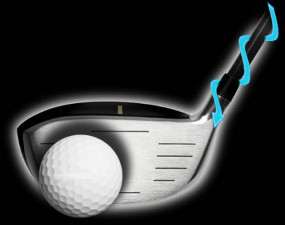
Moment of Inertia (aka MOI)
The term Moment of Inertia (MOI) is a crucial concept in golf that refers to the resistance of an object to rotational motion. In simpler terms, it measures how easy or difficult it is to rotate an object around a specific axis. In the context of golf, MOI is particularly important in understanding the behavior and performance of a golf club.
When a golf club strikes the ball, it experiences a collision that generates both linear and rotational forces. The linear forces determine the initial velocity and direction of the ball, while the rotational forces affect how the clubhead twists and turns during impact. The MOI enables golfers and club designers to assess the club's resistance to twisting and understand its overall stability.
The MOI of a golf club depends on various factors, including the distribution of weight or mass around the clubhead. Essentially, clubs with a higher MOI are more resistant to twisting, providing stability and contributing to more forgiving shots. On the other hand, clubs with a lower MOI are less resistant to twisting, which can result in less stability and lower forgiveness.
- Factors that influence the MOI of a golf club:
- Clubhead Size: Generally, larger clubheads have a higher MOI compared to smaller ones. This is because the weight is distributed farther from the club's axis, increasing the resistance to twisting.
- Weight Distribution: The way the weight is distributed within the clubhead affects its MOI. Clubs with weight concentrated near the toe and heel of the clubhead tend to have a higher MOI.
- Clubhead Design: Certain clubhead designs incorporate features that enhance MOI. For example, clubs with perimeter weighting, where the weight is positioned around the perimeter of the clubhead, have a higher MOI.
Understanding the MOI of a golf club is crucial for golfers when choosing the right equipment. A club with a higher MOI will provide more forgiveness on off-center hits by reducing the amount of twisting that occurs upon impact. This means that even if you don't hit the ball dead center on the clubface, a higher MOI can help maintain stability and improve accuracy.
Additionally, club manufacturers utilize the concept of MOI to design clubs that offer specific benefits to golfers. For example, game improvement clubs are often engineered to have a higher MOI to assist players in achieving longer and straighter shots, amplifying their forgiveness.
It's important to note that the MOI of a golf club is not the only factor that contributes to its performance. Factors such as swing mechanics, shaft flex, and loft also play significant roles. However, understanding MOI allows golfers to make informed decisions when selecting clubs and helps them make adjustments to their swing if needed.
By considering the MOI of a golf club, you can enhance your understanding of how its design and characteristics contribute to your performance on the course. Whether you're a beginner or an experienced golfer, having a basic understanding of MOI will help you make more informed decisions when choosing golf equipment and improve your overall game.





